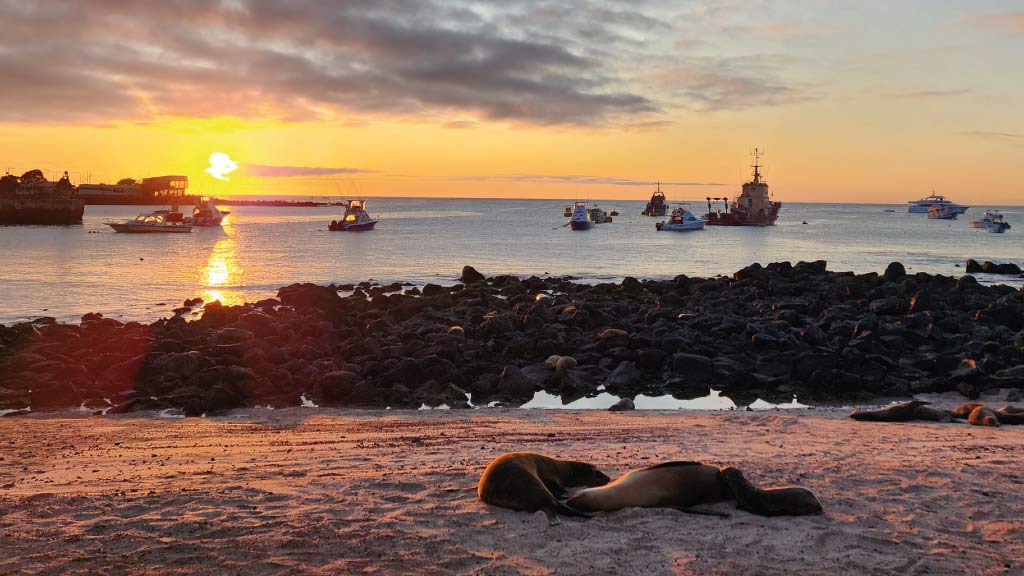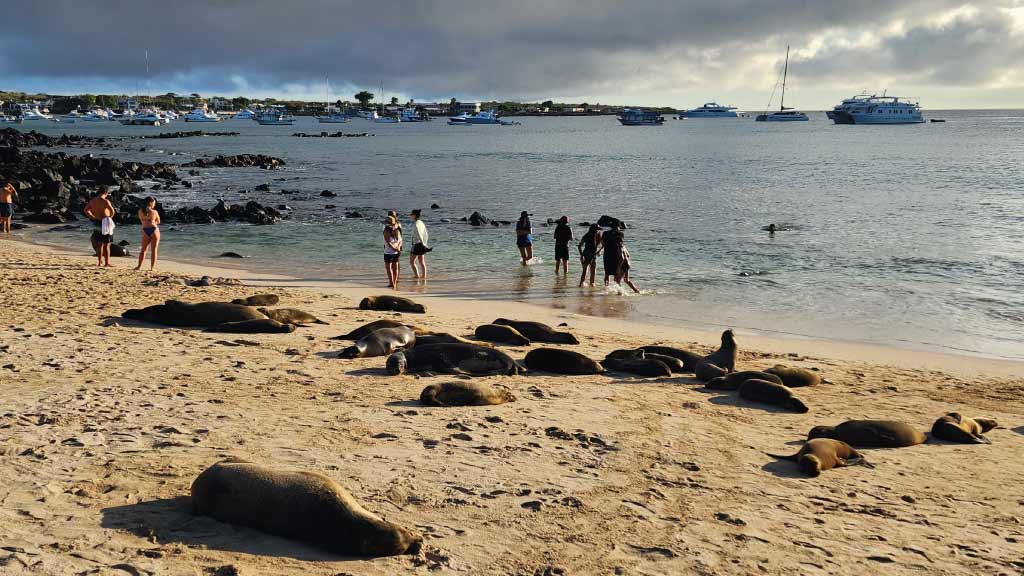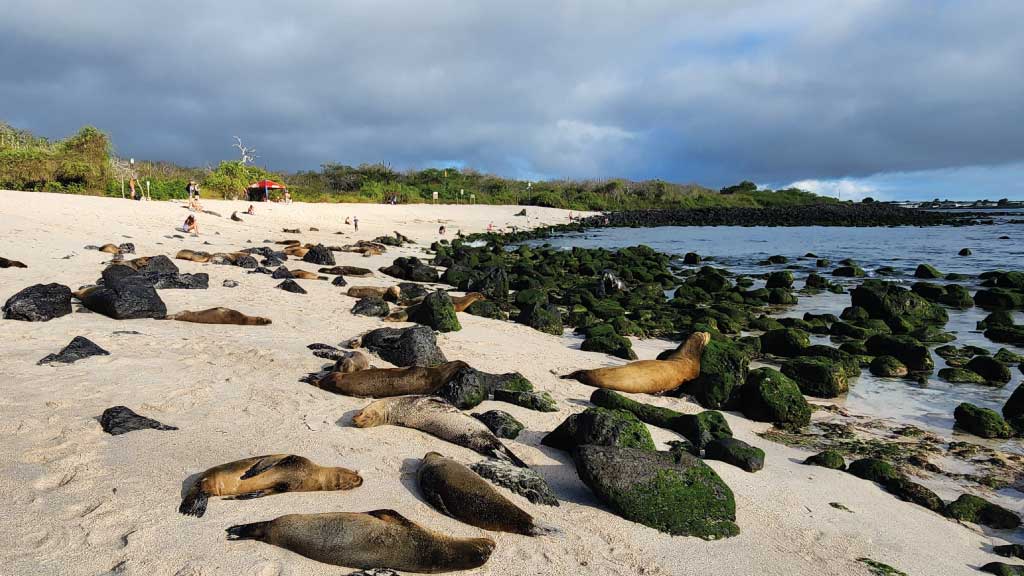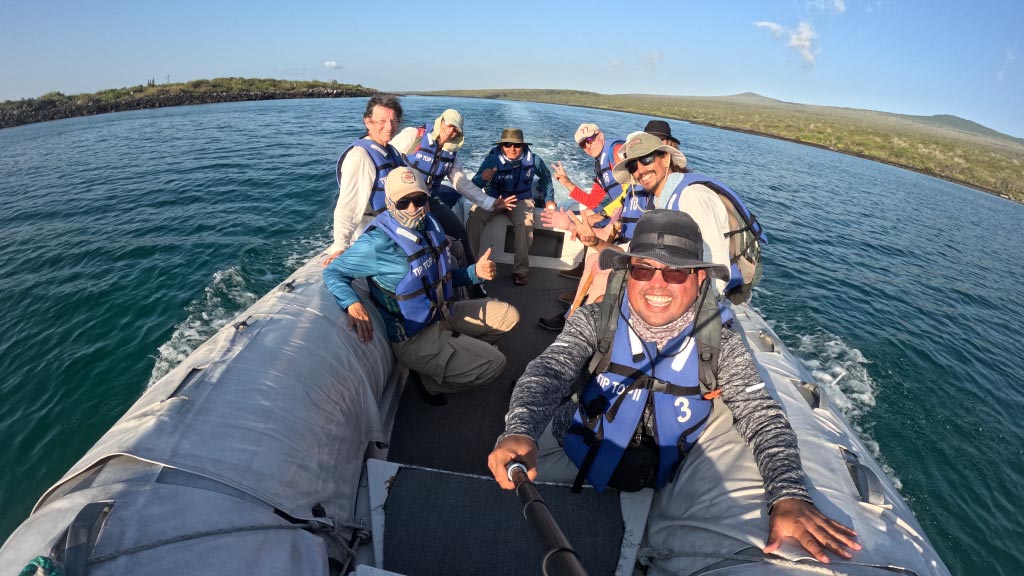Are the Galapagos Islands Safe?
Is it safe to travel to Galapagos? Yes, in fact, the Galapagos Islands are one of the safest tourist destinations in all of South America.
The Galapagos Archipelago is a protected National Park, Marine Reserve, and UNESCO Natural Heritage site. So, by its very nature, the Galapagos is a controlled and regulated destination.
The islands are also located over 1000km away from mainland South America. This makes Galapagos a very isolated place, and far away from any safety issues on the continent.
The Galapagos locals are extremely welcoming and depend on tourism for their livelihood. So, they share a collective interest in keeping Galapagos safe for visitors.
Keep reading to delve deeper into the various aspects of safety in the Galapagos Islands in our comprehensive guide for prospective visitors.
SECURE YOUR GALAPAGOS TRAVEL
Get a FREE personalised quote today
Galapagos Safety: Crime and Social Issues
What's the crime rate in the Galapagos Islands? It’s extremely low.
Although visitors are advised to take standard precautions and use common sense, such as safeguarding valuables, it is safe to wander the streets at any time of day. In fact, in 20+ years of operation, no Happy Gringo client has ever been the victim of crime at the Galapagos Islands.
Remember that the local Galapagos communities rely heavily on tourism. They therefore prioritize visitor safety and hospitality to maintain a positive reputation for the islands. Also, Galapagos towns are small, so, if something untoward were to happen, then locals will be the first to know about it, and will be sure to put things right.
It also helps that entry to the islands is regulated for immigration purposes. So, at any given time the authorities know exactly who is living at or visiting the islands. This too helps to reduce the potential for criminal activity and adds an extra layer of control.
Other safety issues like social unrest are also very rare in Galapagos. It’s fair to say that the islands are an oasis of peace, and the residents aim to keep it that way.

Galapagos Safety: Natural Disasters
Another thumbs up for Galapagos Islands safety is that this is not a high-risk area for natural disasters or weather phenomena.
The Galapagos climate is stable, without extremes like snowstorms, hurricanes, or typhoons.
Although Galapagos is located in a region prone to seismic activity, the archipelago has not been severely impacted by any past earthquakes.
Perhaps the biggest natural safety risk is of tsunami in the event of a strong earthquake in South America. Galapagos towns are well prepared though. You’ll spot clear signs pointing towards safe tsunami meeting areas on higher ground. Tsunami protocols and warning alerts are also well-organized.

GET FREE ADVICE
From a Galapagos destination expert todaySafety With Galapagos Wildlife
Are there dangerous animals in the Galapagos Islands? No, but of course some natural caution and common sense is required.
Most visitors are attracted to the Galapagos Islands by the chance to observe the unique birds and animals in their natural habitat. Incredibly, most species here show no fear towards humans, owing to centuries of isolation from mainland predators. While this closeness allows for extraordinary wildlife encounters, it also necessitates responsible behavior from visitors.
Visitors are required to maintain a respectful distance from the wildlife, at least 2 meters at all times. Also, don’t touch or feed the animals. Like any wildlife, they may bite or become aggressive if feeling threatened.
A favorite tour activity is to snorkel or dive with Galapagos sharks. Is this safe? Since records began in 1854, there have only been 8 incidents of shark-related aggression at the Galapagos. Of those, only 3 involved tourists, and there have been no fatalities.

Staying Safe on your Galapagos Tour
It goes without saying that you should book through a reputable Galapagos tour operator. This will ensure that you receive the best service and assistance, including in the unlikely event that something goes wrong. Some of the cheaper Galapagos agencies and operators cut corners to save money, but that may put your trip at risk.
During a Galapagos Cruise, Day Tour, or Galapagos Land Tour you’ll be together with a bilingual, licensed National Park guide. By paying close attention to his/her advice and recommendations it’s easy to stay out of harm’s way during each activity.
It’s also very important that you follow National Park Rules. In particular, stick to the marked paths, and stay close to your guide and group at all times. Some of the island terrain is rocky and steep and can be surprisingly treacherous if you wander off.
Galapagos cruise yachts are equipped with life rafts, life vests, and other safety features. The crew is also well-trained in the case of an emergency evacuation, and guests are given a safety briefing on the first day.
The Galapagos inter-island ferry service is less regulated than the official cruise operators. There have been occasional accidents over the years, some including fatalities, so we strongly recommend wearing the life vest throughout the crossing.

Staying Safe in the Water at Galapagos
Galapagos snorkeling and diving will undoubtedly be highlights of your trip. Just imagine sharing the water with sea lions, Galapagos penguins, reef sharks, rays, and colorful fish.
Each marine visitor site has varying levels of difficulty in terms of currents and water depth. So, again, it’s very important to follow the advice of your tour guide who knows the potential risks at each site.
When snorkeling, always stay together with the group – pop your head out of the water regularly to check out where they are, and avoid drifting. The panga zodiac drivers are always close to your group, so just let them know if you wish to get out, or get into difficulties in the water.
For those who may not be strong swimmers, it’s fine to wear a life vest or take a floatie into the water with you for extra buoyancy.

Galapagos Health & Medical Facilities
What if you become sick or suffer an unexpected accident on the Galapagos Islands?
There are Galapagos Medical Centers at Puerto Ayora (Santa Cruz), Puerto Baquerizo Moreno (San Cristobal), and Puerto Villamil (Isabela). Galapagos medical staff are happy to help you with common ailments and medical issues.
However, for serious medical help, evacuation to mainland Ecuador may be necessary. Both Quito and Guayaquil cities have excellent, international standard hospitals and experienced medical staff to help you.
What are the most common health issues that could affect Galapagos visitors? The list includes sunburn, exposure, dehydration, cuts caused by accidental falls, antibiotic treatment for animal bites, and other miscellaneous incidents.
The good news is that no specific vaccinations are required to visit the Galapagos, and malaria is not present here.
Perhaps most importantly though, wherever in the world you travel, it’s best to contract travel insurance that includes coverage for unexpected health emergencies and repatriation. Travel insurance is worth every penny for the peace of mind it provides. Nothing ruins a holiday more than a large, unexpected medical bill at the end.
For help in booking your Ecuador or Galapagos Trip, contact us for a FREE QUOTE. Happy Gringo have close to 20 years of experience helping 10k+ tourists to successfully make their dream vacation happen.
As well as the Galapagos Islands, we specialize in custom-made itineraries including mainland Ecuador, the Amazon Rainforest, Cloud Forest, Peru, Colombia, and much more besides.
Book with The #1 Trusted
Galapagos Travel Agency
Conclusion – Is it Safe to Travel to the Galapagos Islands?
In conclusion, the Galapagos Islands offer a very safe destination for travelers. In fact, in terms of crime, the archipelago is one of the safest destinations in all of Latin America.
By understanding the park regulations, and respecting your guide’s advice, tourists can enjoy a safe and trouble-free vacation.

